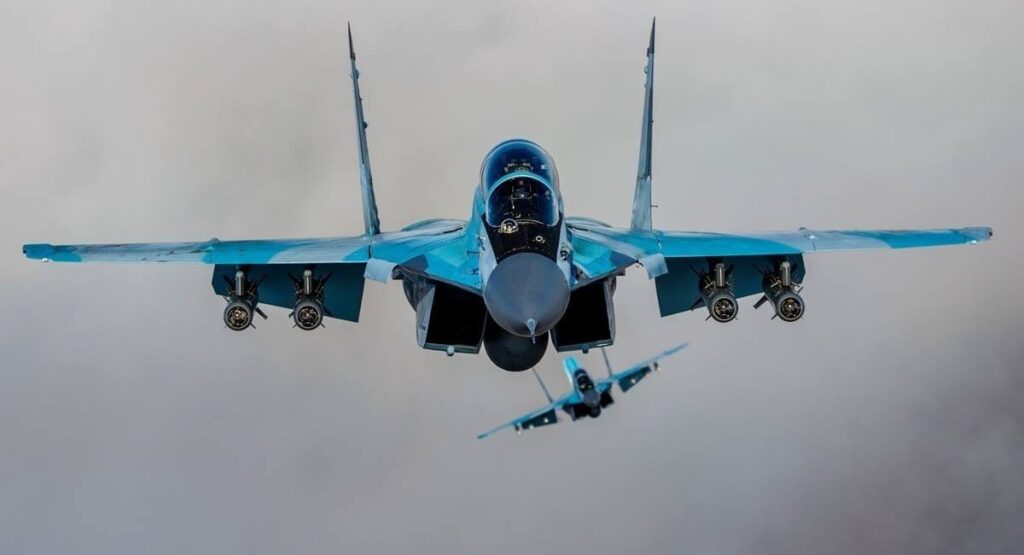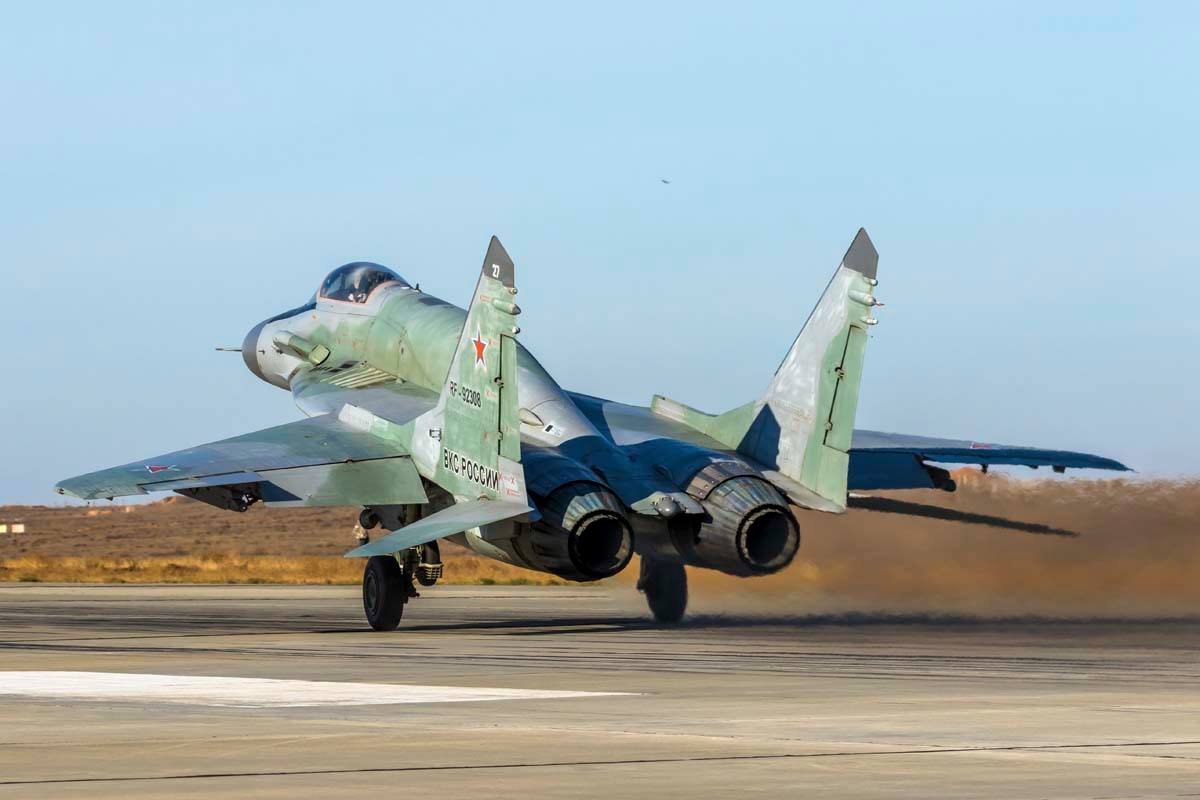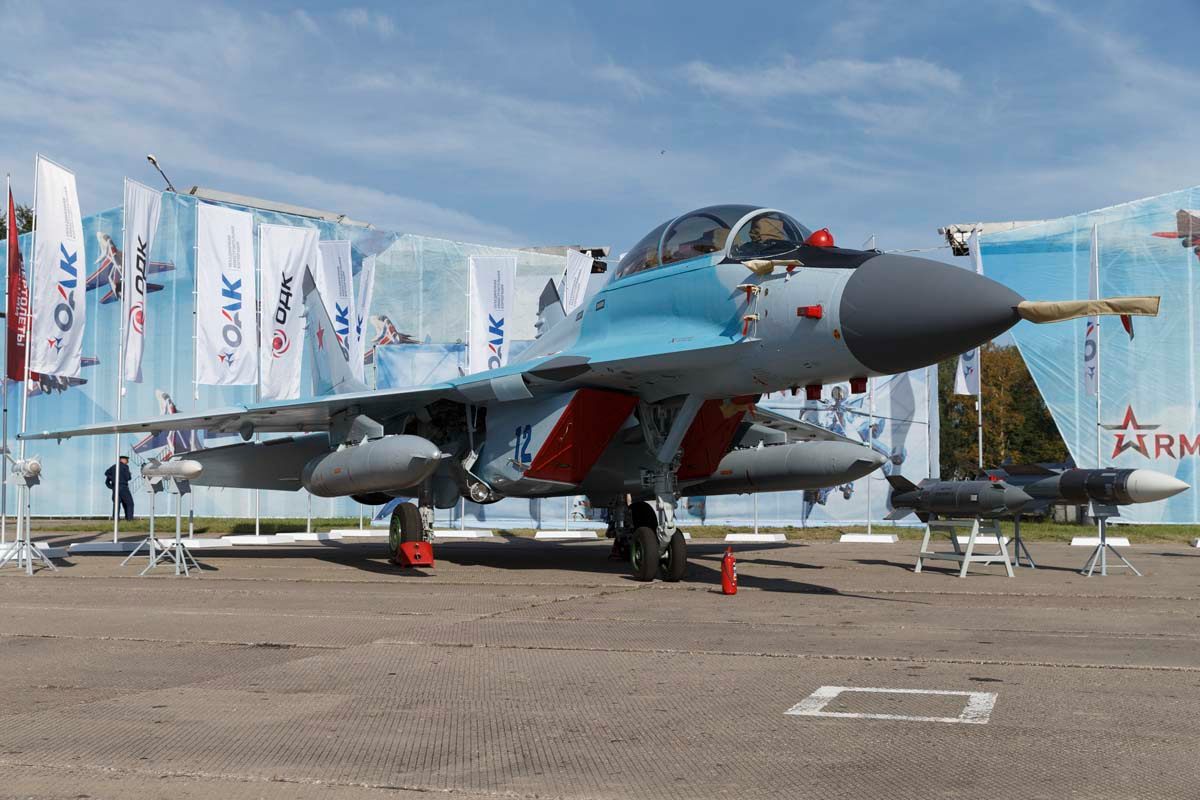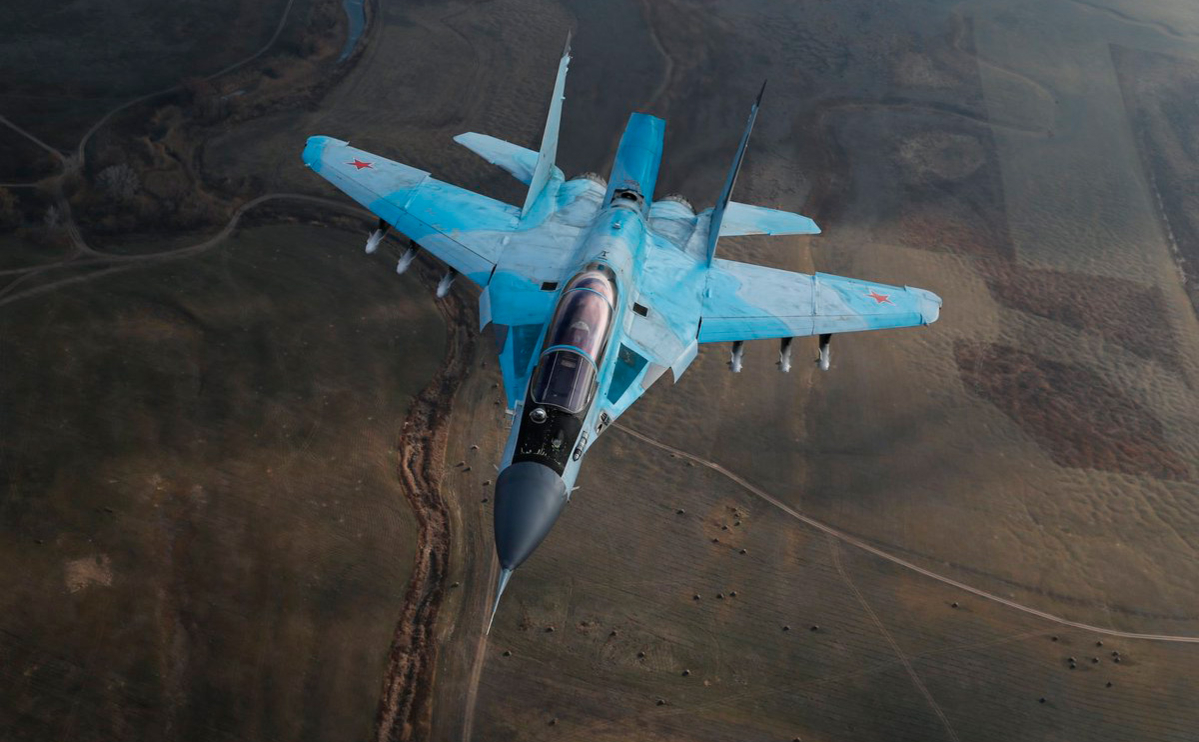
The Ministry of Defence of the russian federation has announced that the first six mass-produced MiG-35S fighter aircraft have been delivered to the Aerospace Forces of russia. That is, quite a small batch of combat jets took five years to produce since the order was placed back in 2018.
The MiG-35S is another modernization to the MiG-29, the maiden flight dates 2017. The aircraft was initially positioned as a product for export and the Aerospace Forces were not very interested in acquiring them for themselves.

Side note, generally over the past few dozen years Moscow rather bet on the aircraft from JSC Sukhoi. The design bureau was awarded orders for hundreds of Su-30, Su-34, Su-35, and modernization of aging Su-27 jets.
In the meantime, MiG was only busy with smaller contracts, such as the order for 16 (12 in other sources) MiG-29SMT aircraft delivered in 2015–2016. Invariably, the air regiments flying the MiG-29 in russia gradually transitioned to Su-30 or Su-35.
The order for six MiG-35S for own air forces was most likely related to the fact that in the late 2010s russia was trying to sell this aircraft abroad. In a traditional manner, Moscow announced in 2017 that at least 30 countries around the world were interested in the MiG-35 and there was a big contract with India almost within the grasp.
Ultimately, though, they are still trying to sell these MiG-35s to India and no other potential customers have appeared since then.

Basically, the MiG-35 is more of a brand name for the purpose of marketing. Because under the new name, the very same MiG-29 hides, although, of course, with some really significant upgrades purposed to raise it up to the level of a 4+ generation fighter. So it would be more proper to call it by its older codename, MiG-29M2.
The modernized fighter received wings with increased mechanization and wingspan, the newly developed Zhuk radar system was integrated (however, still unknown whether it is the Zhuk-A version with AESA, or the Zhuk-M with a simpler slotted antenna), an electronic warfare system was installed, the RD-33 engine upgraded, along with a partial digitalization of systems and integration of new weapons, including those for air-to-surface attacks.
Evidently, in comparison to the Soviet MiG-29, the capabilities of the MiG-35S are much broader but they still cannot compete with the heavier Su-30 or Su-35. To make matters worse, the last two have entered mass production long ago. That gives us a reason to believe the MiG-35S won’t actually find a place in the russian Aerospace Forces.
Currently, the russian Aerospace Forces mostly keep MiG-29s and their modifications in the training centers, in the Swifts aerobatic team (rus. Strizhi), as part of the Admiral Kuznetsov aircraft carrier aviation group, and in an experimental air regiment in Lipetsk. There are also some combat duty jets serving at a russian air base in Armenia.
Against this background, it’s worth recalling that the MiG series manufacturer Mikoyan announced in 2014 that they were expecting an order for a hundred MiG-35S.

On a final note, although there is still a faint possibility that the Kremlin decides to turn its attention toward the cheaper MiG-35S due to the increasing shortage of combat aircraft, there is still an established production of the Su series, and, according to the Moscow’s statements, it keeps expanding.
On the other hand, an increase in MiG-35 production tempo any higher than six fighters in five years as a solution to the urgent problem is not so promising, at least it should be impossible in the near future.
MiG-35 Specifications
- Maximum take-off weight: 24,500 kg (54,000 lbs)
- Maximum payload: 6,500 kg (14,300)
- Number of hardpoints: 9
- Engines: 2 x RD-33 of the 3M series with an afterburner thrust of 8,800 kgf
- Maximum speed: 2,100 km/h (1,300 mph)
- Effective ceiling: 16 km (10 mi)
- The maximum flight range: 3,000 km (1,800 mi)